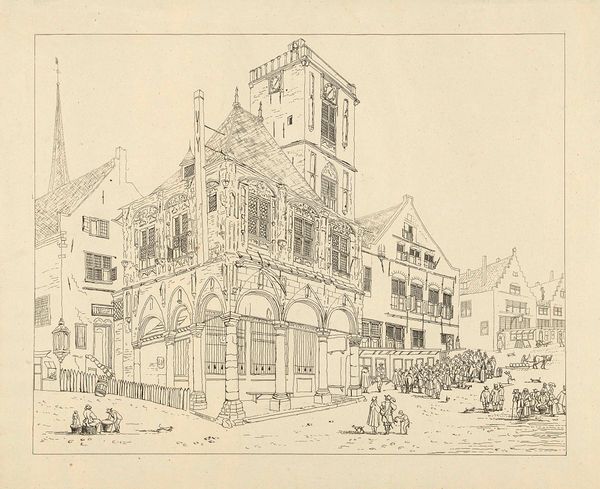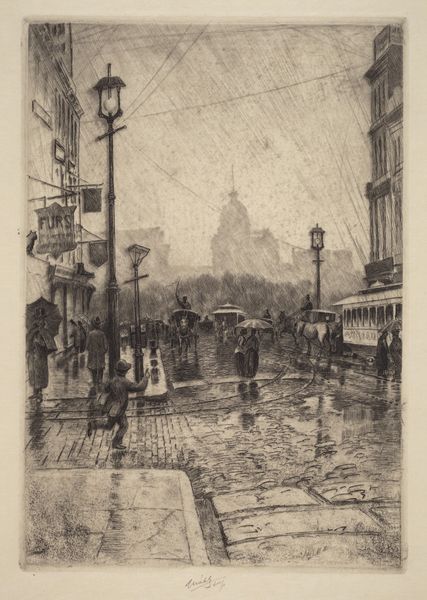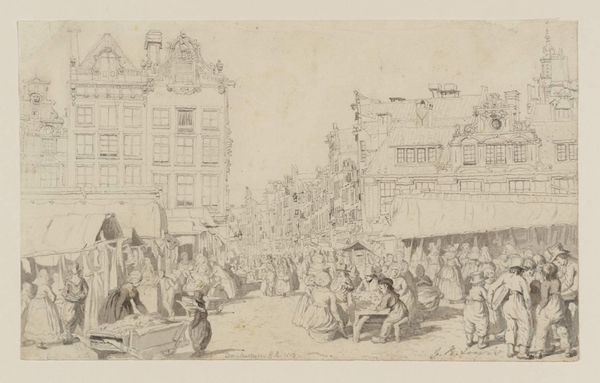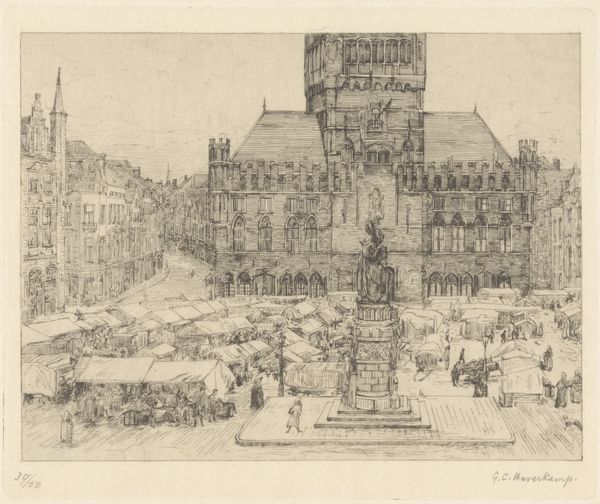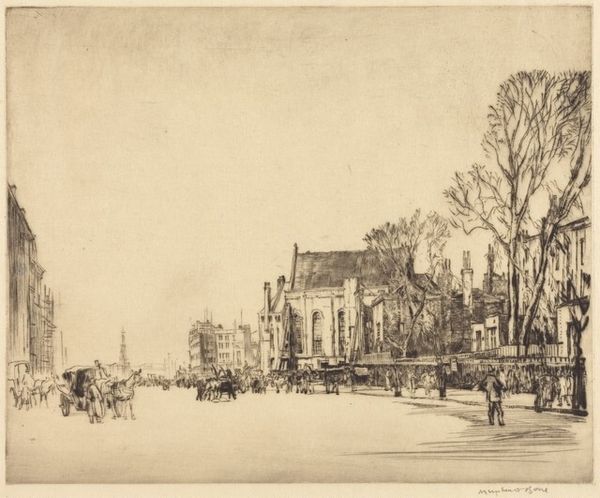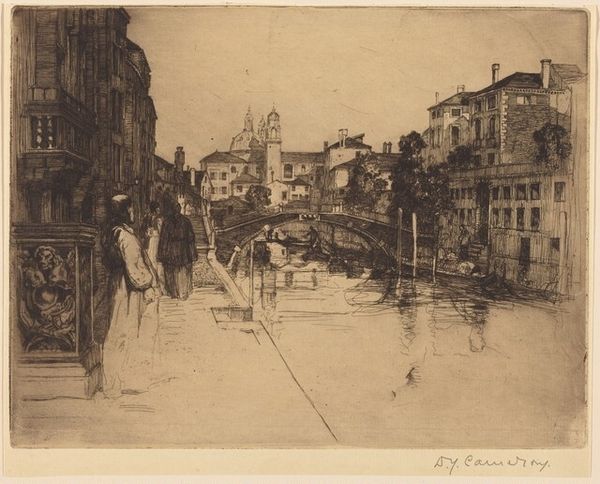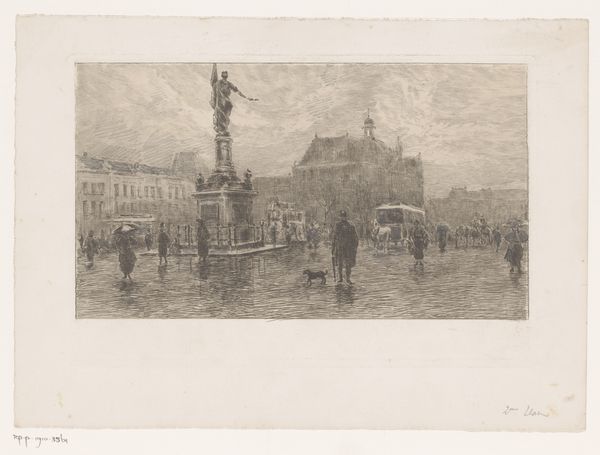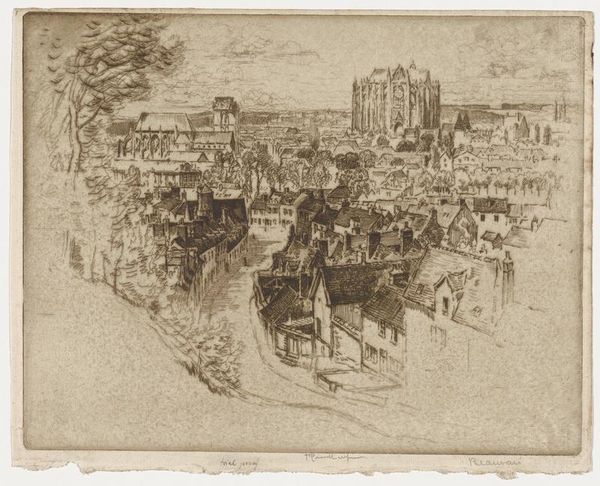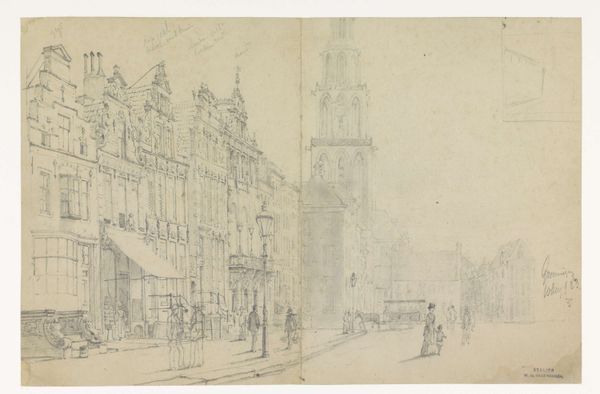
Fotoreproductie van schilderij Dam met paardentram door George Hendrik Breitner 1886 - 1910
0:00
0:00
Dimensions: height 174 mm, width 263 mm
Copyright: Rijks Museum: Open Domain
Curator: Welcome. Here we have a photogravure titled “Dam with Horse Tram” by George Hendrik Breitner, created sometime between 1886 and 1910. It’s a gelatin silver print capturing a slice of Amsterdam's cityscape. Editor: It’s striking how the hazy atmosphere almost dematerializes the solid architecture and turns the city square into a liminal space, almost a dream. Curator: Absolutely. Breitner was keen on documenting the daily life of Amsterdam, its constant flux and energy. The trams, the figures hurrying about their business…he’s really attuned to the working-class presence reshaping the city's landscape and social dynamics. Editor: It's important to consider the technological implications here too. This is more than just a captured moment. The materiality of this gelatin silver print is directly connected to mass reproducibility. He captures a scene and immediately democratizes that vision, making it infinitely reproducible, and widely accessible. Curator: Yes, and consider Breitner’s background as a painter trained in academic realism before shifting to this impressionistic, documentary style. His move towards photography provided an immediacy lacking in the formal structure of traditional paintings, reflecting broader cultural shifts that valued capturing authentic moments of everyday life, documenting and shaping our perceptions. Editor: Speaking of broader cultural shifts, it's equally essential to acknowledge that photographic materials –gelatin, silver– all point towards extraction, labor, and industrial processes. Looking closely allows one to deconstruct these systems that framed Breitner’s artistic vision, as the commodification and industrialization processes are deeply intertwined. Curator: A very valid point! Breitner’s images offer us a rich source of historical context, but they also allow us to think critically about representation, and who has access to documenting these historical narratives and making them publicly available. Editor: Yes, ultimately, understanding the layers of physical labor allows for more complex engagement and thoughtful appreciation, moving beyond aesthetic value judgements. Curator: Indeed. Looking at “Dam with Horse Tram” offers a profound look into how we frame not just what we see, but what is physically made accessible through social practice.
Comments
No comments
Be the first to comment and join the conversation on the ultimate creative platform.




